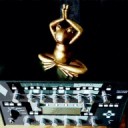I'll start by saying that I'm not used to having to explain myself this much. Usually after people experience my work they don't ask these kinds of questions. I know I'm new here but if you Google my previous work you'll only hear positive things through over 5 years of creating guitar tones for professional gigging/studio musicians. And if you feel like "all he does is djent" based on my Periphery 3 and 4 collaborations, I'll remind you that I'm more of a blues/alternative guitar player myself.

You are explaining NOTHING in the video. 100 % realistic, 100 % realisti, 100 % realistic... yeah, we get that now  But again, you are explaining really nothing... very weird?!
But again, you are explaining really nothing... very weird?!
But please answer the simple questions (I have already asked above):
1. In your first comparison video, did you use the Kemper direct profile and converted IR or is it direct profile into an IR loader with the original IR?
2. How can you guarantee 100 % realistic sound, when using CONVERTED IR (using cab maker)? The converted profiles will NOT sound 100 % the same to the original IR you are praising - I think you know that?! That makes your whole concept questionable.
So you are basically make "special" direct amp amp profiles and then just copy your already existing IR in - after you converted them with cab maker, which makes the cab part sound and feel different compared to the original IR (in my experience).
And your secret method is only a benefit, if I want to change cabs in the same profile ("amp / cab separation") or maybe use direct profiles, right? Compared to common studio profiles (where no "separation" is needed) there is no advantage. Because other vendors simply profile the full signal chain for EVERY cab / mic combination and therefore I don't need to change cabs.
Display More
I was trying to avoid the "annoying marketing speech" which was the feedback I was getting from you guys and just show you because I thought it was very obvious in the video. I mean there is actual audio there which was the whole point of the video. Especially around 7:20 where I try out three merged cabinet captures by other profile makers I thought I made it very clear. One sounds far away, one sounds like treble on full and one sounds like all the honky mids on full. This was the message I've been trying to get across. You guys wanted proof so I did my best trying to do just that without offending Kemper or other profile makers.
I'll admit that it is hard for me to get the message across because 1) if I explain my full process I would have to talk about "my secrets" and 2) the preconceptions people may have. The biggest false truth I hear is that "converted IR's don't work". First of all it makes a huge difference what IR's your using. Depending on your IR shoot method and knowledge on how to create clean captures, you will be left with power amp color in your IR which means that the IR has an EQ curve baked in it. So if you've tried IR's with the Kemper and they sounded bad, chances are they just weren't compatible with the profiles you were using because the power amp color is already a part of the profile and also the IR so it's got the same thing "modeled twice".
About the IR conversion: Kemper states that it takes 1.5secs of information in the CabMaker, which seems a bit overkill since 500ms is definitely the maximum length needed for anything else than a reverb. According to my measurements I lose some of the low end resonance with the conversion process and the low end resonance is what requires a longer IR format which is still in the 200ms-500ms area. What you'll notice on all my profiles is that there's an EQ block right after the cab that's fixing this and luckily it's low end because that can be fixable with EQ. If it was the high end I would agree with some people about IR conversion not working. Even that being said the difference is almost completely inaudible but since it's measurable I have the EQ correction active.
Like I said about a dozen times already these profiles need to sound 100% like the real amp. After all these profiles are done they still go through multiple bench tests before they're accepted. Here's a video sample of one of the high gain profiles being tested against a real amplifier and an Axe-Fx II: https://www.dropbox.com/s/i3hz…video-1548686445.mp4?dl=0 Measuring the difference while the same DI signal is being fed to all sources ensures that not only the EQ response is the same but the dynamic response acts in the same way. So in this example you'll see the the low end is a little bit off which is inaudible but it was fixed with the EQ in the ML rigs. This is just one of the tests these rigs go through.
I'm here to answer any questions. Although there's a weird vibe here right now (which I assume is normal on every forum these days) I'm happy that the feedback from people who have actually tried these profiles has been completely positive.
![]() I haven't seen one yet especially that's apples to apples.
I haven't seen one yet especially that's apples to apples.